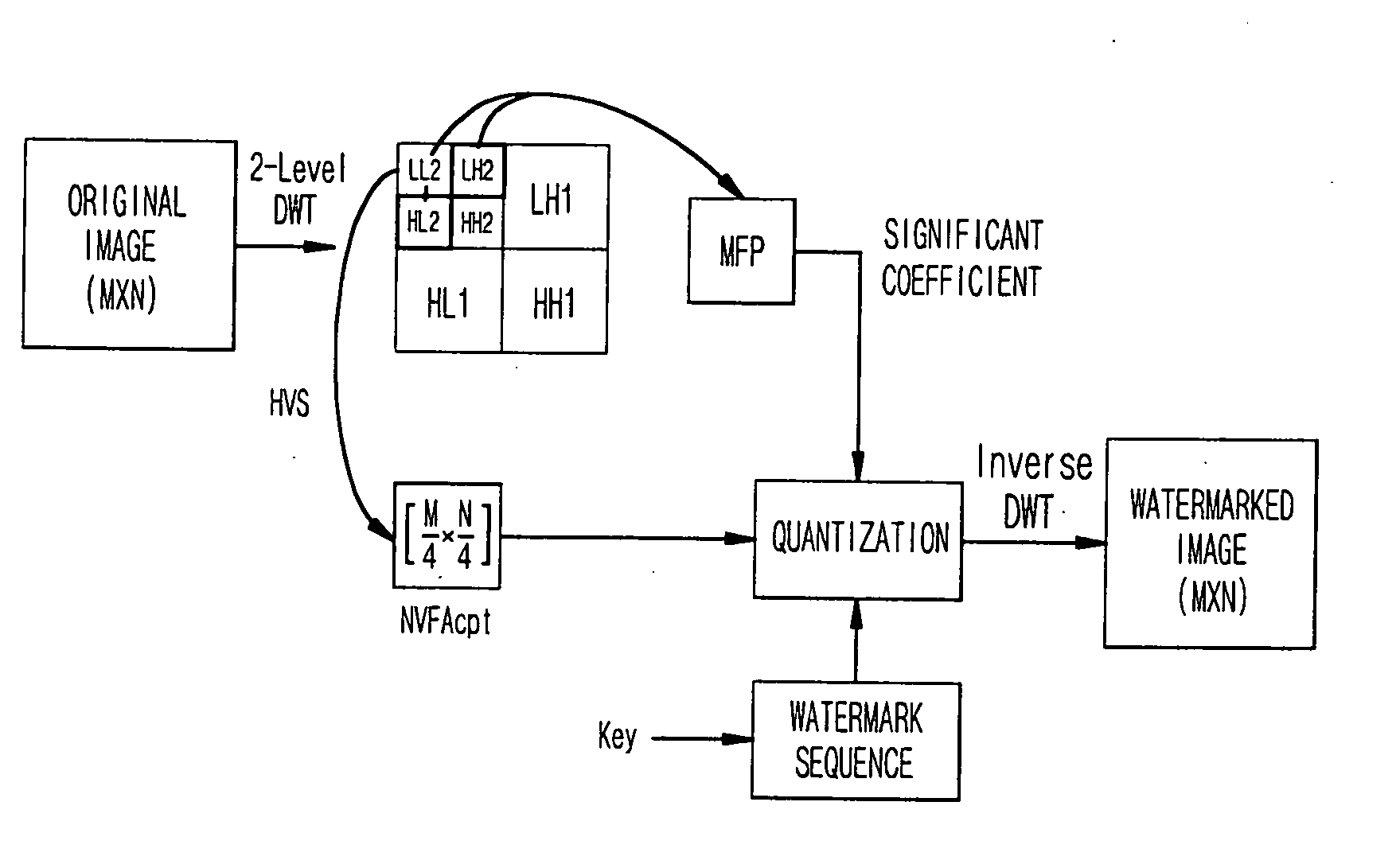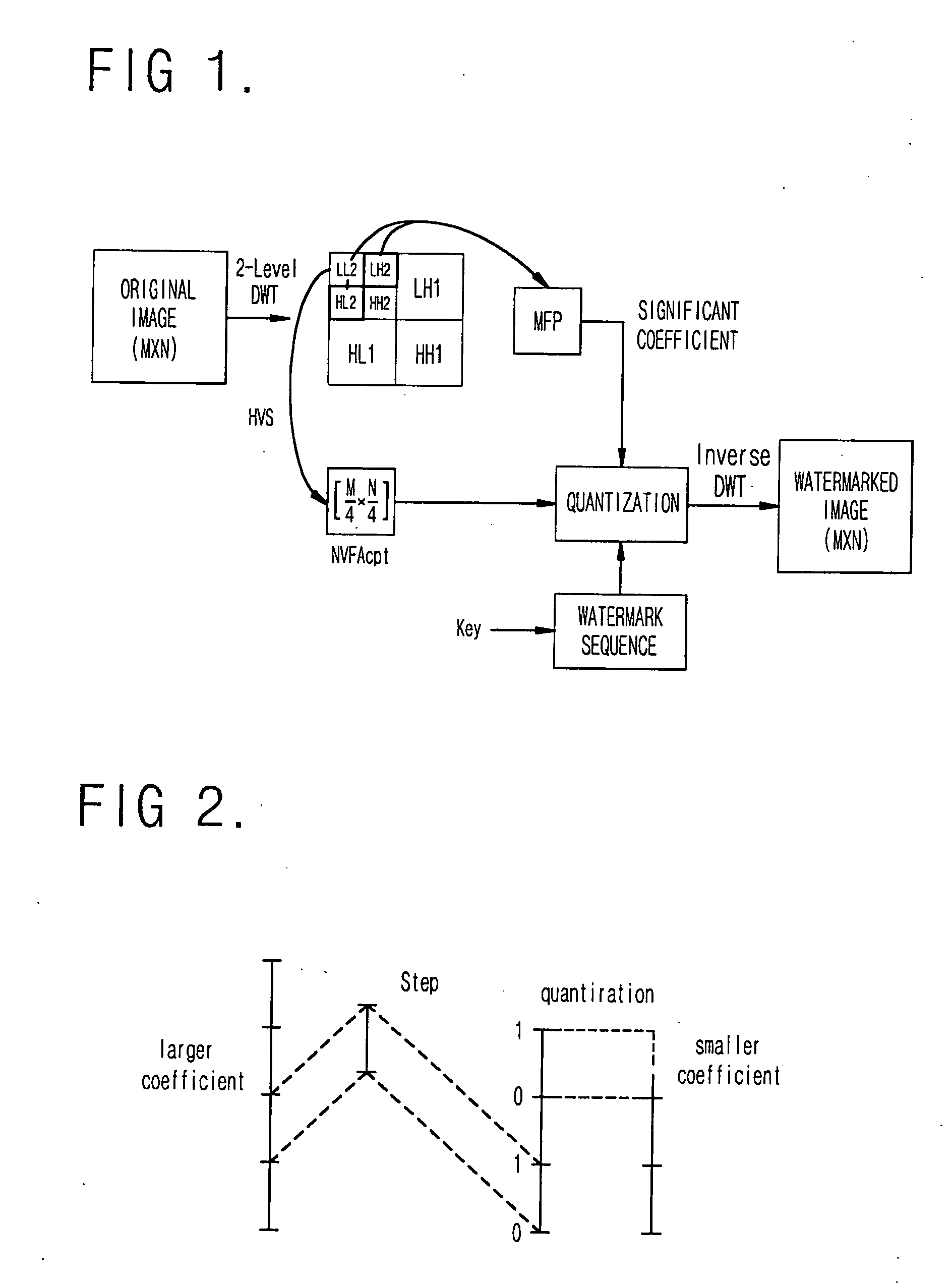Method for blindly embedding and extracting a watermark by using wavelet transform and an HVS model
a technology of wavelet transform and watermark, applied in the field of embedding watermarks and extraction, can solve the problems of inability to be robust against attacks, inaccessible to human eyes, and inability to easily recognize embedded watermarks, and achieve the effect of high image quality
- Summary
- Abstract
- Description
- Claims
- Application Information
AI Technical Summary
Benefits of technology
Problems solved by technology
Method used
Image
Examples
Embodiment Construction
[0022] Reference will now be made in detail to the preferred embodiments of the present invention, examples of which are illustrated in the accompanying drawings.
[0023] In the present invention, considering that human visual system is sensitive to variation of low frequency components and high frequency components are vulnerable to image compression process, a watermark sequence is embedded into a middle frequency band to achieve both robustness and invisibility.
[0024] A pair of coefficients within the middle frequency band have similar distortion characteristics to each other for various image processing attacks and a compression attack. Accordingly, in the present invention, a watermarking technique that has more stable performance by using a quantization step determined differently according to coefficient values of the middle frequency band is suggested instead of a method for quantizing a wavelet coefficient by a predetermined size. An HVS model that is imitates a human visua...
PUM
 Login to View More
Login to View More Abstract
Description
Claims
Application Information
 Login to View More
Login to View More - R&D
- Intellectual Property
- Life Sciences
- Materials
- Tech Scout
- Unparalleled Data Quality
- Higher Quality Content
- 60% Fewer Hallucinations
Browse by: Latest US Patents, China's latest patents, Technical Efficacy Thesaurus, Application Domain, Technology Topic, Popular Technical Reports.
© 2025 PatSnap. All rights reserved.Legal|Privacy policy|Modern Slavery Act Transparency Statement|Sitemap|About US| Contact US: help@patsnap.com



